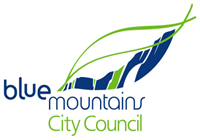Industry sector data identifies the industries in which the residents of an area work either within the residing area or elsewhere. Comparing the industry sectors in which Blue Mountains City residents are employed in the industry sectors that are located in Blue Mountains City, indicates whether an economy draws on the skills offered by its own residents, or on a different set of skills imported from elsewhere in the region.
Industry sector statistics in Blue Mountains City are influenced by a range of factors including:
- The economic base and employment opportunities available within commuting distance;
- The educational levels of the local population; and
- The working and social aspirations of the local population.
Industry sector data should be viewed in conjunction with Residents place of work.
Data source
Australian Bureau of Statistics (ABS) – Census 2016 and 2021 – by usual residence
Current benchmark:
Sex:
| Resident workers industry of employment | |||||||||
|---|---|---|---|---|---|---|---|---|---|
| Blue Mountains City - Persons | 2021 | 2016 | Change | ||||||
| Industry (Click rows to view sub-categories) | Number | % | New South Wales | Number | % | New South Wales | 2016 - 2021 | ||
| Agriculture, Forestry and Fishing | 250 | 0.7 | 2.0 | 285 | 0.8 | 2.1 | -35 | ||
| Mining | 123 | 0.3 | 1.0 | 122 | 0.3 | 0.9 | +1 | ||
| Manufacturing | 1,664 | 4.6 | 5.5 | 1,761 | 4.9 | 5.8 | -97 | ||
| Electricity, Gas, Water and Waste Services | 459 | 1.3 | 1.0 | 440 | 1.2 | 0.9 | +19 | ||
| Construction | 3,143 | 8.7 | 8.6 | 2,918 | 8.1 | 8.4 | +225 | ||
| Wholesale Trade | 774 | 2.1 | 2.8 | 807 | 2.3 | 3.1 | -33 | ||
| Retail Trade | 2,879 | 7.9 | 9.0 | 2,974 | 8.3 | 9.7 | -95 | ||
| Accommodation and Food Services | 2,177 | 6.0 | 6.2 | 2,634 | 7.3 | 7.1 | -457 | ||
| Transport, Postal and Warehousing | 1,255 | 3.5 | 4.6 | 1,293 | 3.6 | 4.7 | -38 | ||
| Information Media and Telecommunications | 578 | 1.6 | 1.8 | 611 | 1.7 | 2.2 | -33 | ||
| Financial and Insurance Services | 1,024 | 2.8 | 5.3 | 1,006 | 2.8 | 4.9 | +18 | ||
| Rental, Hiring and Real Estate Services | 536 | 1.5 | 1.7 | 603 | 1.7 | 1.8 | -67 | ||
| Professional, Scientific and Technical Services | 2,700 | 7.4 | 8.9 | 2,317 | 6.5 | 8.1 | +383 | ||
| Administrative and Support Services | 996 | 2.7 | 3.2 | 1,106 | 3.1 | 3.5 | -110 | ||
| Public Administration and Safety | 3,260 | 9.0 | 6.1 | 3,191 | 8.9 | 6.0 | +69 | ||
| Education and Training | 5,476 | 15.1 | 8.7 | 5,305 | 14.8 | 8.4 | +171 | ||
| Health Care and Social Assistance | 5,884 | 16.2 | 14.4 | 5,238 | 14.6 | 12.5 | +646 | ||
| Arts and Recreation Services | 765 | 2.1 | 1.4 | 834 | 2.3 | 1.5 | -69 | ||
| Other Services | 1,234 | 3.4 | 3.4 | 1,197 | 3.3 | 3.7 | +37 | ||
| Industry not classified | 1,113 | 3.1 | 4.6 | 1,233 | 3.4 | 4.7 | -120 | ||
| Total Persons | 36,290 | 100.0 | 100.0 | 35,875 | 100.0 | 100.0 | +415 | ||
Source: Australian Bureau of Statistics, Census of Population and Housing 2016 and 2021. Compiled and presented by .id (informed decisions) | |||||||||


Dominant groups
Analysis of the jobs held by the resident workforce in Blue Mountains City in 2021shows the three most popular industry sectors were:
- Health Care and Social Assistance (5,884 people or 16.2%)
- Education and Training (5,476 people or 15.1%)
- Public Administration and Safety (3,260 people or 9.0%)
In combination these three industries employed 14,620 people in total or 40.3% of the total resident workforce.
In comparison, New South Wales employed 14.4% in Health Care and Social Assistance; 8.7% in Education and Training and 6.1% in Public Administration and Safety.
The major differences between the jobs held by the resident workforce of Blue Mountains City and New South Wales were:
- A larger percentage of resident workforce employed in Education and Training (15.1% compared to 8.7%)
- A larger percentage of resident workforce employed in Public Administration and Safety (9.0% compared to 6.1%)
- A smaller percentage of resident workforce employed in Financial and Insurance Services (2.8% compared to 5.3%)
- A larger percentage of resident workforce employed in Health Care and Social Assistance (16.2% compared to 14.4%)
Emerging groups
The largest changes in the jobs held by the resident workforce between 2016 and 2021 in Blue Mountains City were for those employed in:
- Health Care and Social Assistance (+646 resident workforce)
- Accommodation and Food Services (-457 resident workforce)
- Professional, Scientific and Technical Services (+383 resident workforce)
- Construction (+225 resident workforce)
